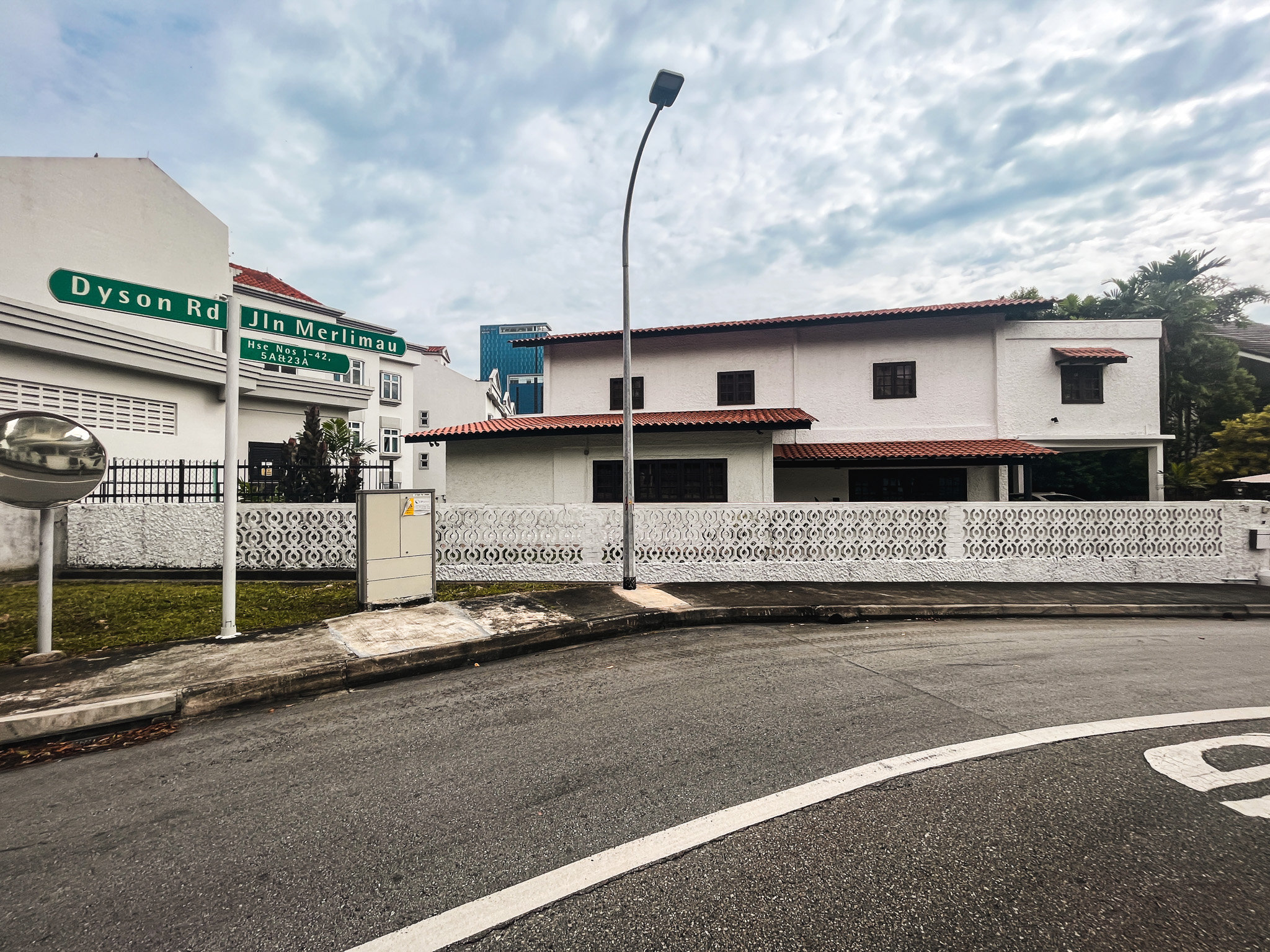Why Property Agents Are No Longer Pushing You “Sell One, Buy Two” In 2023
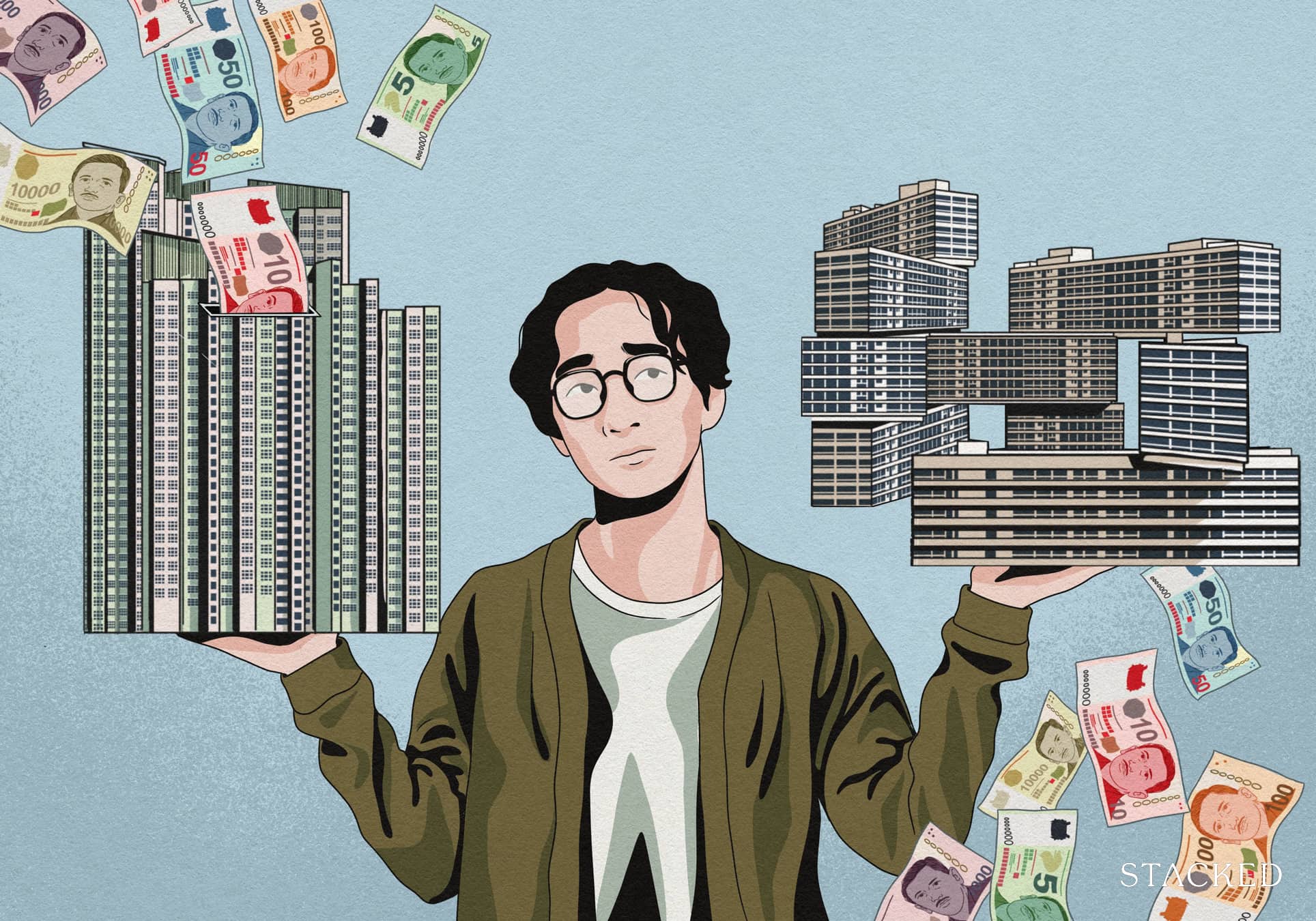
Get The Property Insights Serious Buyers Read First: Join 50,000+ readers who rely on our weekly breakdowns of Singapore’s property market.
A seasoned content strategist with over 17 years in the real estate and financial journalism sectors, Ryan has built a reputation for transforming complex industry jargon into accessible knowledge. With a track record of writing and editing for leading financial platforms and publications, Ryan's expertise has been recognised across various media outlets. His role as a former content editor for 99.co and a co-host for CNA 938's Open House programme underscores his commitment to providing valuable insights into the property market.
The “sell one, buy two” strategy has been in the property playbook for some time now, going back to at least the last property dip in 2016. But it’s a term we’ve heard less often these past year or so, and more than one property agent has told us they hesitate to recommend it these days. We took a look at what’s happened to this “time-tested” way to avoid the stamp duties, and whether it has a future going forward:
The significance of “Sell One, Buy Two” over the past decade
We weren’t able to pinpoint who originated the term and the strategy, but we do recall it surfacing sometime in 2016/17 (let us know if this is wrong). At the time, the strategy was a response to HDB preventing decoupling among flat owners. It was also during a dip in the property market when units were more affordable but the market was moving quite slowly.
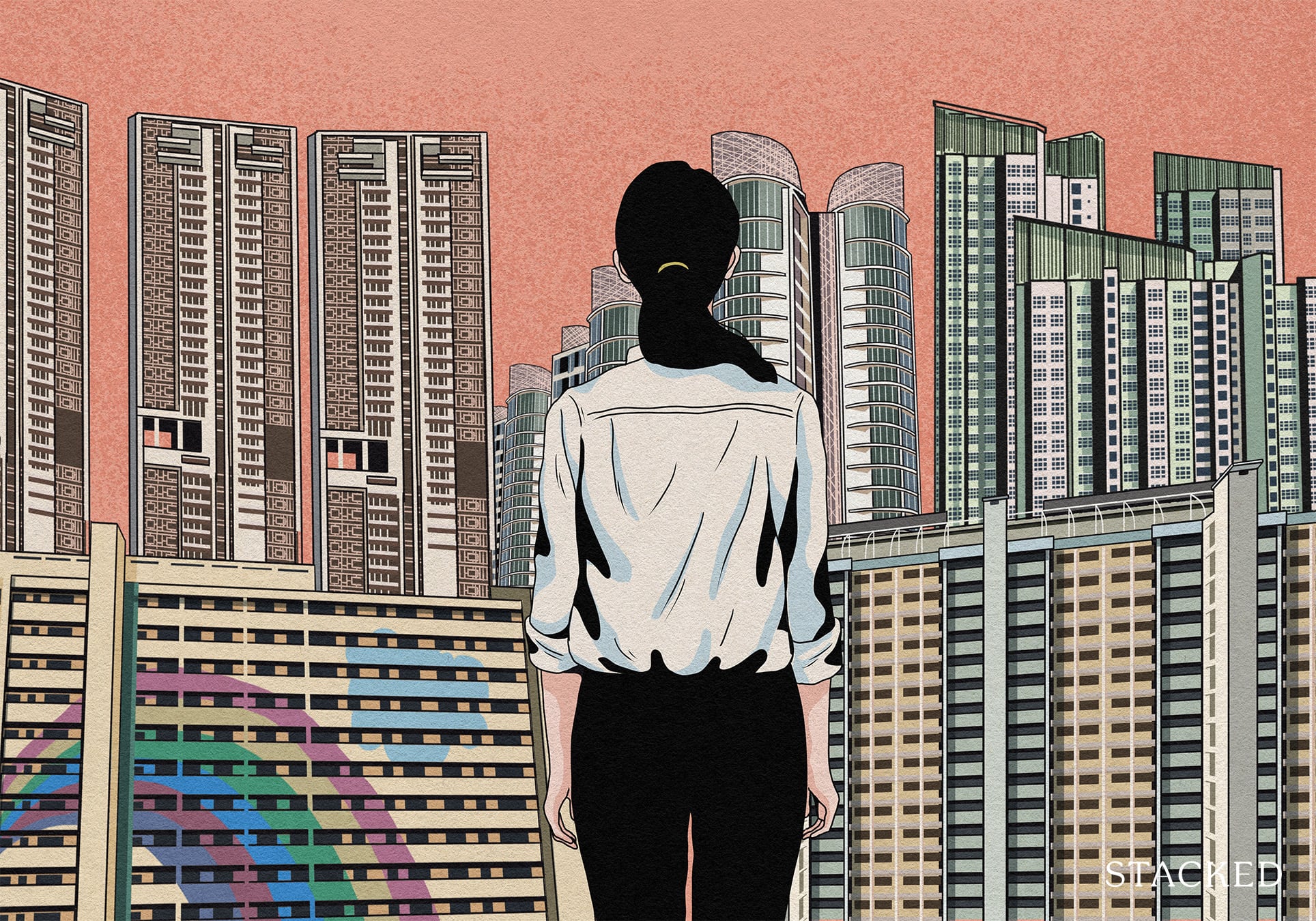
The idea is for a couple to sell their current property (usually but not always an HDB flat) and have each spouse take a separate mortgage for a separate property. As neither spouse would have a property count of greater than one, there would be no Additional Buyers Stamp Duty (ABSD) applicable.
In most of these scenarios, the recommendation would be for the higher-income spouse to get a larger unit (the family home), while the other spouse would buy a small rental asset (typically a shoebox unit, or a two-bedder).
Over the past few years, this has been the go-to approach for more affluent, investment-minded buyers. But despite ABSD rates being higher in 2023, we notice few realtors have mentioned the strategy to buyers. In fact, some have opined that it’s no longer safe or practical for many clients.
Why is “Sell One, Buy Two” losing popularity?
To illustrate this, let’s consider two scenarios:
Scenario #1 – A couple buys a 4-room flat in Waterway Banks in 2014.
Scenario #2 – A couple buys a 4-room flat in Matilda Edge in 2017.
Both developments were chosen for their similar purchase prices, location, and year when they would do the “Sell 1 Buy 2” strategy (2020 and 2023 respectively).
First, let’s look at the cash remaining in scenario #1
| Info | Detail |
| 4 Room Purchase Price | $308,000 |
| Selling Price In 2020 (average) | $433,000 |
| 10% Downpayment Made (Full Cash) | $30,800 |
| Loan Amount (Paid In Cash) | $277,200 |
| Balance After 5 Years | $234,405 |
| Cash After Sale | $198,595 |
| Cash After 2%+GST Agent Fees | $189,328 |
Now here’s the cash remaining in scenario #2
| Info | Detail |
| 4 Room Purchase Price | $311,000 |
| Selling Price In 2023 (average) | $571,000 |
| 10% Downpayment Made (Full Cash) | $31,100 |
| Loan Amount (Paid In Cash) | $279,900 |
| Balance After 5 Years | $236,689 |
| Cash After Sale | $334,312 |
| Cash After 2%+GST Agent Fees | $322,092 |
Notice how the cash left in scenario #2 is way higher? Well, that’s because we haven’t factored in the increase in housing prices since 2020.
So let’s take a look at the difference in downpayment amount once we factor that in.
Downpayment required in scenario #1
| Info | 3BR (Own Stay) | 1BR (Investment) |
| Purchase Price (2020) | $1,500,000 | $650,000 |
| Downpayment | $375,000 | $162,500 |
| Total Downpayment Required (25%) | $537,500 | |
| Difference ($537,500 – $189,328) | $348,172 | |
Downpayment required in scenario #2
| Info | 3BR (Own Stay) | 1BR (Investment) |
| Purchase Price (2023) | $1,905,000 | $825,500 |
| Downpayment | $476,250 | $206,375 |
| Total Downpayment Required (25%) | $682,625 | |
| Difference | $360,533 | |
If you look at the difference in cash top-up, you’ll find that it’s quite similar. So while property prices did go up, so did the existing property which helped cover the increased downpayment required.
However, the price increase between 2020 and 2023 would still have discouraged many from doing the sell 1 buy 2 strategy. Why? This is due to the 2 cooling measures that were introduced in 2021 and 2022:
1) TDSR was tightened for housing loans by MAS from 60% to 55% (Dec 2021)
2) Medium-term floor rate was increased from 3.5% to 4% in calculating TDSR (Sep 2022)
These numbers may not look big, but they make a significant dent in who can do this strategy – particularly HDB upgraders.
To illustrate this, let’s look at the same two scenarios:
Scenario #1
| Income needed in 2020 | 3BR (Own Stay) | 1BR (Investment) |
| Purchase Price (2020) | $1,500,000 | $650,000 |
| Loan Amount (75%) | $1,125,000 | $487,500 |
| Mortgage (Based on 3.5% floor rate, 30 year tenure) | $5,052 | $2,189 |
| Min income needed (Based on 60% TDSR) | $8,420 | $3,648 |
Here, you see that with a 3.5% floor rate and a 60% TDSR back in 2020, you’ll need $8,420 per month and $3,648 per month to do this strategy.
Scenario #2
| Income needed in 2023 | 3BR (Own Stay) | 1BR (Investment) |
| Purchase Price (2023) | $1,905,000 | $825,500 |
| Loan Amount (75%) | $1,428,750 | $619,125 |
| Mortgage (Based on 4% floor rate, 30-year tenure) | $6,821 | $2,956 |
| Min income needed (Based on 55% TDSR) | $12,402 | $5,374 |
| Difference | 47.3% | 47.3% |
With the increased rate from 3.5% to 4% and a reduction in TDSR from 60% to 55%, the same couple now needs to earn at least $12,402 and $5,374 based on the increased prices and increased cooling measures.
This resulted in an increase in income required of 47.3% which is much higher than the nominal increase in median wages between 2020 to 2023.
But rental prices went up during this time, prompting some to ask whether or not the investment portion of the sell 1 buy 2 still makes sense.
More from Stacked
L’Viv vs Martin Modern: Which Should I Go For If I Want A 2+Study Or 3 Bedroom Unit?
Hello there,
Here’s the difference if you had secured a 3-year rental contract and loan agreement in 2020 versus 2023.
| Info | 2020 | 2023 |
| Purchase Price (1BR Investment) | $650,000 | $825,500 |
| Loan Amount | $487,500 | $619,125 |
| Monthly Rent (Source: SRI) | $2,387 | $3,621 |
| Annual Rent (Lock in 3 Years) | $85,932 | $130,356 |
| Less Agent Fees (1 Month) | $2,387 | $3,621 |
| Less Interest Expense (Lock in 3 Years at 1.3% vs 3.5%) | $18,247 | $36,928 |
| Cashflow | $65,298 | $89,807 |
If we’re purely looking at the rental property, the increase in rent does outweigh the increase in interest rates. Thus, the investment portion still makes sense, provided you can still afford the property.
What about the own-stay portion?
| Info | 2020 | 2023 |
| Purchase Price (3BR Own Stay) | $1,500,000 | $1,905,000 |
| Loan Amount | $1,125,000 | $1,428,750 |
| Interest Expense (Lock in 3 years at 1.3% vs 3.5%) | $42,108 | $145,747 |
| Difference | $103,639 | |
The difference in this case is $103,639 which is quite hefty – an outcome of a higher interest rate.
From here, we can see that the strategy itself isn’t bad, it’s just prohibitively expensive and downright impossible for a greater proportion of buyers.
So what are the main reasons for the falling popularity of the “Sell 1 Buy 2” strategy?
- 1. Increased risk in today’s market condition
- 2. Higher prices since COVID-19
- 3. Increased cooling measures
1. Increased risk
The chief risk of “Sell One, Buy Two” has always been dual mortgages: as each spouse has their own unit, this means each party takes on a mortgage of their own.
The generally accepted “safety margin” for a home buyer is a loan that doesn’t exceed 30 per cent of monthly income*. But as interest rates soar, buyers find themselves more likely to go past this limit; and most would rather just share a single mortgage instead (i.e., just upgrade to a single bigger home).
This is compounded by high prices since the Covid era, which necessitates bigger loan amounts (see below).
*HDB imposes this on you whether you want it or not, with the Mortgage Servicing Ratio (MSR) limit of 30 per cent. But for private housing, you can go up to 55 per cent in terms of the Total Debt Servicing Ratio (TDSR).
2. Higher prices since COVID-19
Even as we write this, we’re seeing some new launch three-bedders reach the $2 million mark, even outside the central area.
One realtor pointed out that, between 2016 and 2017, when “Sell One, Buy Two” started, “There were one-bedders at around $600,000, and three-bedders below $1.5 million. After Covid prices rose so much in such a short period, but purchasing power did not rise in tandem.”
This is true based on what we’ve illustrated above.
So while disruptions during the pandemic may have caused job losses and economic turmoil, the reality was that due to money being pumped in from the Government for support and demand for homes kept up pushing prices up. This compounded the issue of higher prices, and higher interest rates.
3. Increased cooling measures
The same realtor noted that one-bedders can cost up to $800,000 of late; a quantum that’s unpalatable to many individual borrowers. It can also be harder for a single borrower to qualify for such a large loan, due to increased restrictions on the Total Debt Servicing Ratio (TDSR) and increase in the medium-term floor rate used to calculate the minimum income required. As such, more buyers choose to upgrade to just a single larger property, rather than buying two.
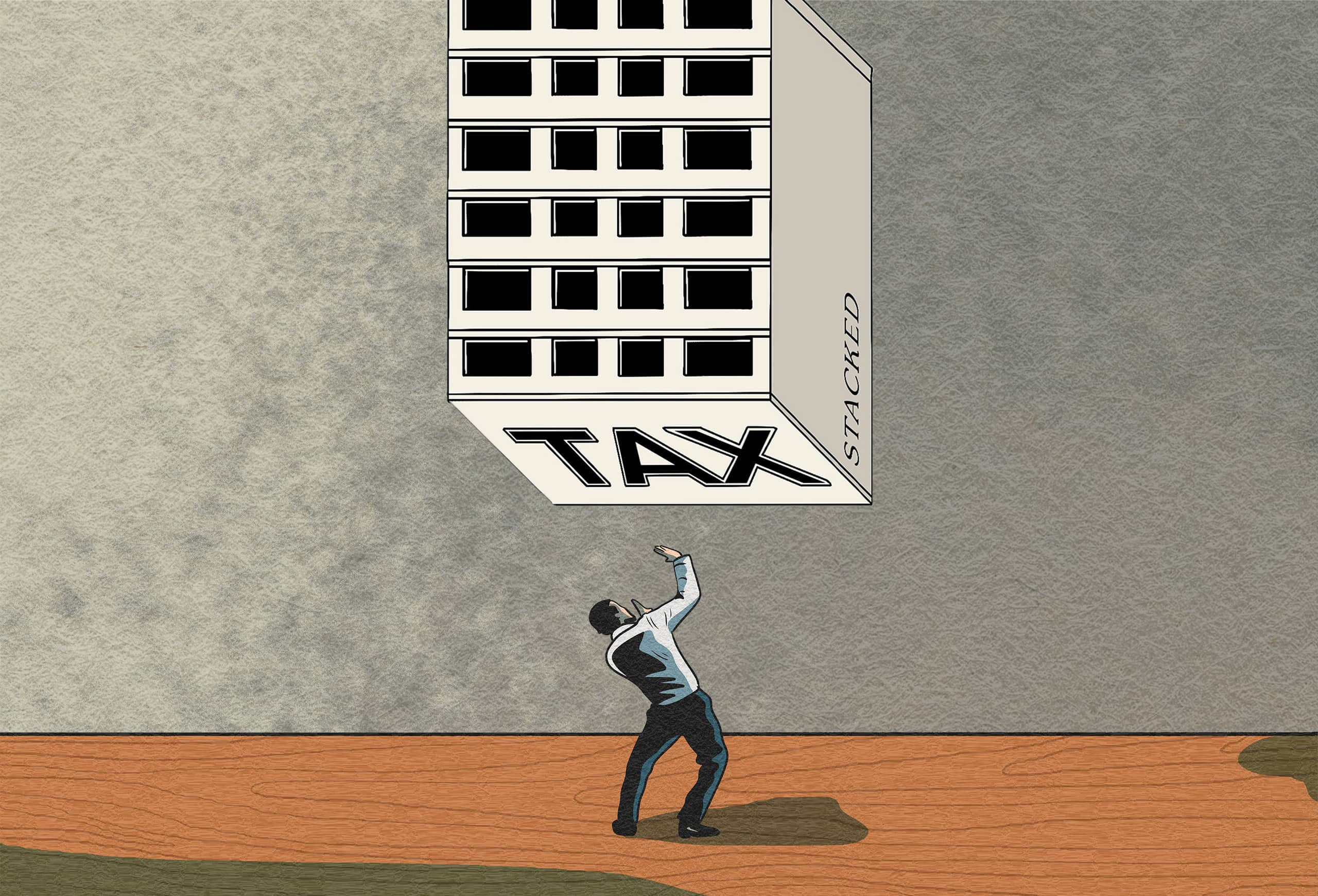
A silver lining: until ABSD rates doubled for foreigners, there were doubts about the rental market
One realtor told us she stopped recommending a second unit for rental, due to expectations regarding the end of Covid:
“I recommended against it to some of my buyers. In non-central areas, rental units during Covid were propped up by Malaysian workers, or other workers who were stuck and urgently needed accommodation. This would no longer be the case after the worst of Covid, and there was no certainty when or in what numbers foreign workers would be back. So I felt it was high risk to gamble on rental income, against a backdrop of rising prices and mortgages.”
She does feel, however, that prospects for rental in CCR and RCR areas may now improve, due to ABSD on foreigners being doubled to 60 per cent. This may incline more of them to rent rather than buy; but she still wouldn’t recommend a “Sell One, Buy Two” strategy as it’s “too speculative.”

Singapore Property NewsNew ABSD Rates In 2023: Here’s Everything You Need To Know About The Additional Buyers Stamp Duty In Singapore
by Ryan J. OngOther realtors were divided on whether high stamp duties for foreigners would sustain the rental market. Some pointed out that the rental market last August was at the lowest in two years, and that the brief post-Covid surge is likely over. They also mentioned the number of condos reaching completion in 2023/4 (see below).
Nevertheless, even with the high rental rates over the past two years, it’s been somewhat cancelled out by the high-interest rates as well. There is also the issue of higher-than-expected maintenance costs for some condos, like Dairy Farm Residences and Parc Komo, which would eat into an investor’s net rental gains.
But with the supply crunch ending, there’s less impetus to buy a rental property
As market watchers have noted, a large number of projects would have reached TOP this year and the next. These projects include mega-developments like Normanton Park, and the sheer number of available units is likely to sap demand.
This isn’t to say “Sell One, Buy Two” is totally dead – but the number of buyers who can afford it, and also have the right risk capacity, have diminished. Besides this, the surge in completed units – coupled with higher prices – makes it much trickier to select the right second unit.
So if you’re tired of the “Sell One, Buy Two” sales pitch, you’ll be glad to know you probably won’t hear it being pitched as much anymore – at least in the year or two ahead.
Follow us on Stacked for more news on the ground, as well as reviews of new and resale properties alike. If you’d like to get in touch for a more in-depth consultation, you can do so here.
Ryan J. Ong
A seasoned content strategist with over 17 years in the real estate and financial journalism sectors, Ryan has built a reputation for transforming complex industry jargon into accessible knowledge. With a track record of writing and editing for leading financial platforms and publications, Ryan's expertise has been recognised across various media outlets. His role as a former content editor for 99.co and a co-host for CNA 938's Open House programme underscores his commitment to providing valuable insights into the property market.Read next from Property Market Commentary

Property Market Commentary When Renting In Singapore Is The Smarter Move — And Buying Can Wait

Property Market Commentary A Wave Of New HDB Resale Supply Is Coming In 2026: Here’s Where To Find Them

Property Market Commentary 5 Key Features Buyers Should Expect in 2026 New Launch Condos

Property Market Commentary What “Lucky” Singaporean Homebuyers Used To Get Away With — That You Can’t Today
Latest Posts

On The Market Here Are The Cheapest 4-Room HDB Flats in Central Singapore You Can Still Buy From $490K

Editor's Pick Should We Buy An Old 99-Year Leasehold Condo To Live In: Will It’s Value Fall When The Lease Runs Out?

Pro How A Once “Ulu” Condo Launched In 1997 Became A Top Performer

Editor's Pick I Reviewed A New Launch 4-Bedroom Penthouse At Beauty World

Editor's Pick Why Singaporean Families Are Looking At This Landed Enclave From Around $4M

Singapore Property News Lentor’s First Condo Is Complete — The Early Profits May Surprise You

Property Advice We Own A $800K 1-Bedder And A $1.1M 3-Bedder: Is It Possible To Upgrade To A 4-Bedder Condo?

On The Market These Are Some Of The Cheapest 5-Room HDB Flats Left In Central Singapore

Pro This 698-Unit Ang Mo Kio Condo Launched At The Wrong Time — And Still Outperformed Peers

Singapore Property News $281.2M in Singapore Shophouse Deals in 2H2025 — But That Number Doesn’t Tell the Full Story

Property Investment Insights These Resale Condos In Singapore Were The Top Performers In 2025 — And Not All Were Obvious Winners

Singapore Property News CapitaLand–UOL’s $1.5 Billion Hougang Central Bid May Put Future Prices Above $2,500 PSF

Singapore Property News Why New Condo Sales Fell 87% In November (And Why It’s Not a Red Flag)

Pro How A 944-Unit Mega-Condo In Pasir Ris Ended Up Beating The Market
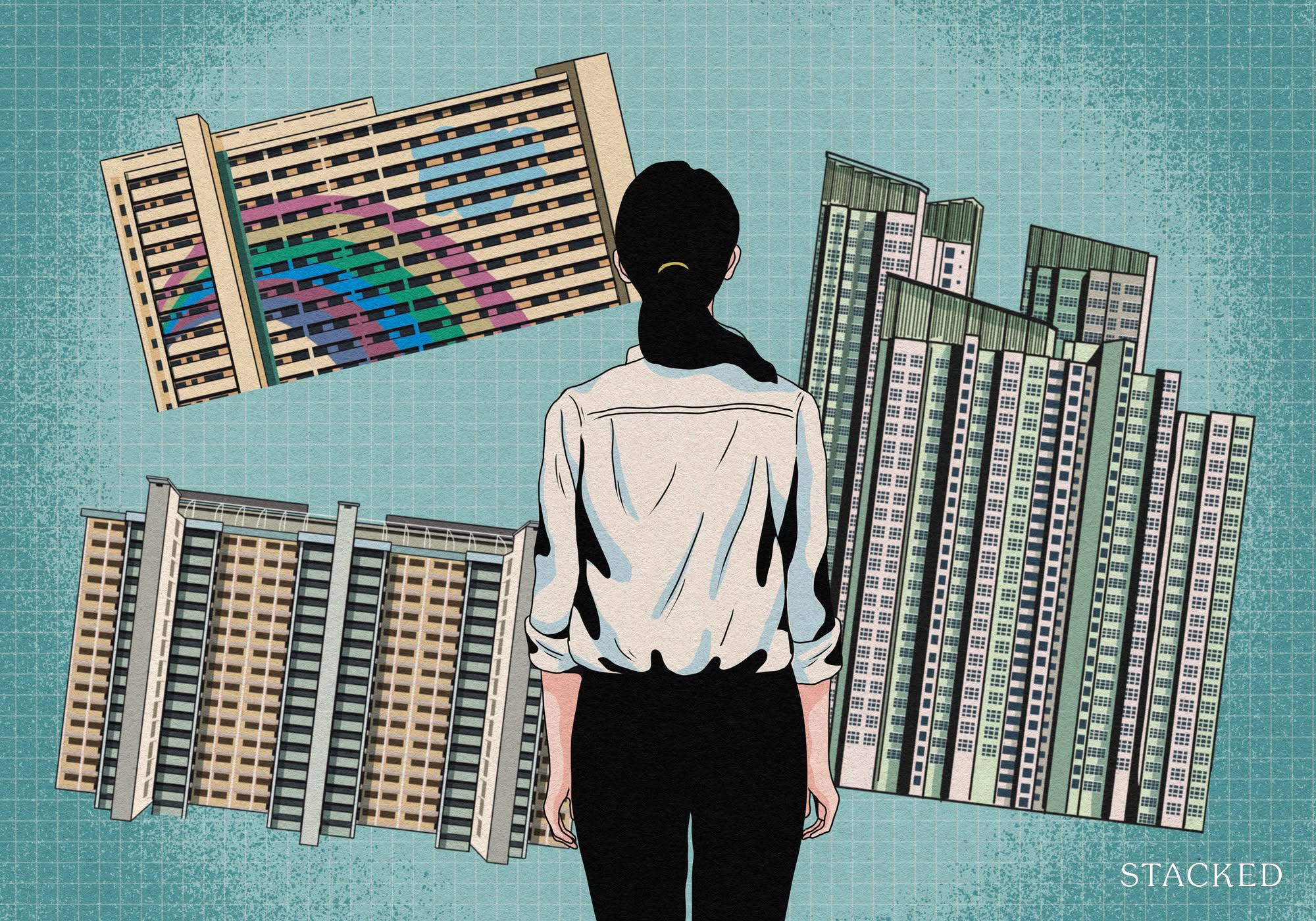
Property Investment Insights What Changed In Singapore’s Property Market In 2025 — And Why It Matters
